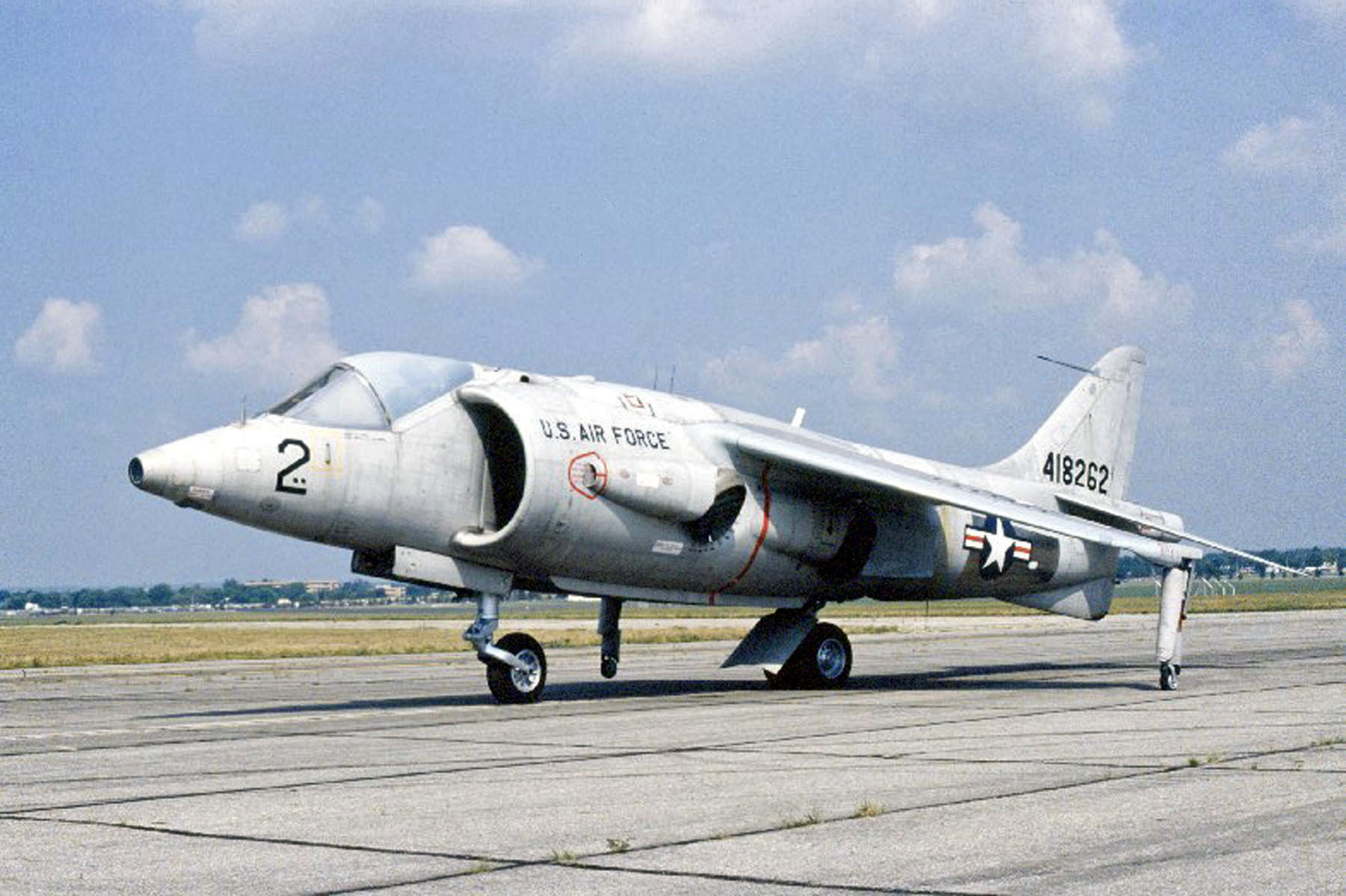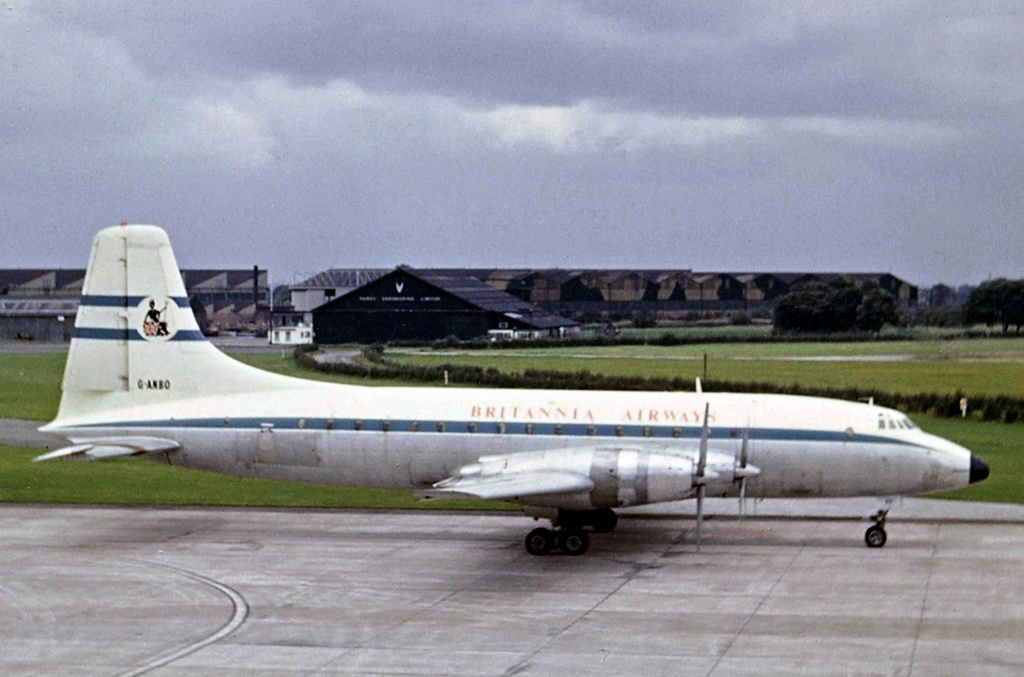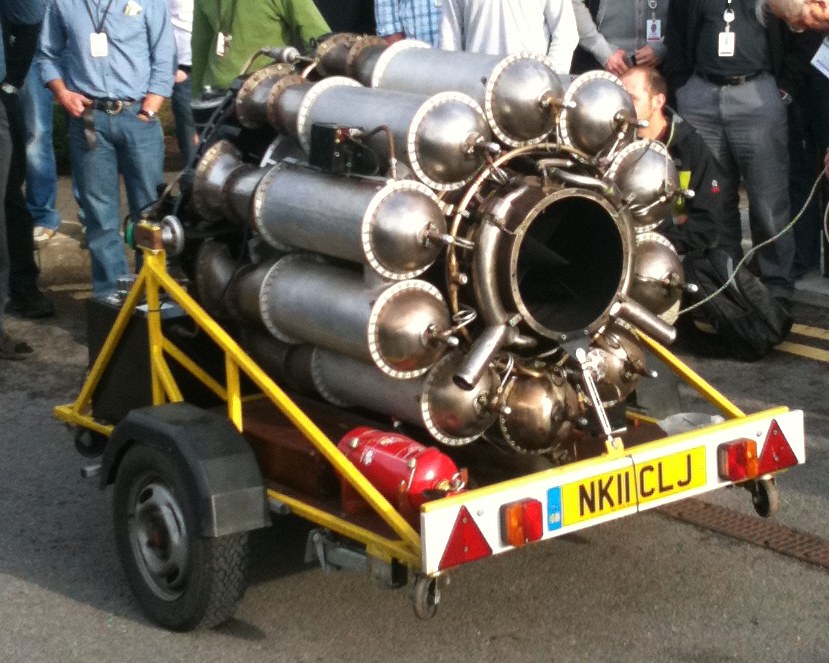|
Sir Stanley Hooker
Sir Stanley George Hooker, CBE, FRS, DPhil, BSc, FRAeS, MIMechE, FAAAS, (30 September 1907 – 24 May 1984) was a mathematician and jet engine engineer. He was employed first at Rolls-Royce where he worked on the earliest designs such as the Welland and Derwent, and later at Bristol Aero Engines where he helped bring the troubled Proteus turboprop and the Olympus turbojet to market. He then designed the famous Pegasus vectored thrust turbofan used in the Hawker Siddeley Harrier. Early life Stanley George Hooker was born at Sheerness and educated at Borden Grammar School. He won a scholarship for Imperial College London to study mathematics, and in particular, hydrodynamics. He became more interested in aerodynamics, won the Busk studentship in aeronautics in 1928 and moved to Brasenose College, Oxford where he received his DPhil in this area in 1935. Rolls-Royce In late 1937, while working at the Admiralty he applied for a job at Rolls-Royce, and after being interviewed ... [...More Info...] [...Related Items...] OR: [Wikipedia] [Google] [Baidu] |
Sheerness
Sheerness () is a town and civil parish beside the mouth of the River Medway on the north-west corner of the Isle of Sheppey in north Kent, England. With a population of 11,938, it is the second largest town on the island after the nearby town of Minster which has a population of 21,319. Sheerness began as a fort built in the 16th century to protect the River Medway from naval invasion. In 1665 plans were first laid by the Navy Board for Sheerness Dockyard, a facility where warships might be provisioned and repaired. The site was favoured by Samuel Pepys, then Clerk of the Acts of the navy, for shipbuilding over Chatham inland. After the raid on the Medway in 1667, the older fortification was strengthened; in 1669 a Royal Navy dockyard was established in the town, where warships were stocked and repaired until its closure in 1960. Beginning with the construction of a pier and a promenade in the 19th century, Sheerness acquired the added attractions of a seaside resort. Indus ... [...More Info...] [...Related Items...] OR: [Wikipedia] [Google] [Baidu] |
Bachelor Of Science
A Bachelor of Science (BS, BSc, SB, or ScB; from the Latin ') is a bachelor's degree awarded for programs that generally last three to five years. The first university to admit a student to the degree of Bachelor of Science was the University of London in 1860. In the United States, the Lawrence Scientific School first conferred the degree in 1851, followed by the University of Michigan in 1855. Nathaniel Southgate Shaler, who was Harvard's Dean of Sciences, wrote in a private letter that "the degree of Bachelor of Science came to be introduced into our system through the influence of Louis Agassiz, who had much to do in shaping the plans of this School." Whether Bachelor of Science or Bachelor of Arts degrees are awarded in particular subjects varies between universities. For example, an economics student may graduate as a Bachelor of Arts in one university but as a Bachelor of Science in another, and occasionally, both options are offered. Some universities follow the Oxford a ... [...More Info...] [...Related Items...] OR: [Wikipedia] [Google] [Baidu] |
Hydrodynamics
In physics and engineering, fluid dynamics is a subdiscipline of fluid mechanics that describes the flow of fluids—liquids and gases. It has several subdisciplines, including ''aerodynamics'' (the study of air and other gases in motion) and hydrodynamics (the study of liquids in motion). Fluid dynamics has a wide range of applications, including calculating forces and moments on aircraft, determining the mass flow rate of petroleum through pipelines, predicting weather patterns, understanding nebulae in interstellar space and modelling fission weapon detonation. Fluid dynamics offers a systematic structure—which underlies these practical disciplines—that embraces empirical and semi-empirical laws derived from flow measurement and used to solve practical problems. The solution to a fluid dynamics problem typically involves the calculation of various properties of the fluid, such as flow velocity, pressure, density, and temperature, as functions of space and time. Bef ... [...More Info...] [...Related Items...] OR: [Wikipedia] [Google] [Baidu] |
Imperial College London
Imperial College London (legally Imperial College of Science, Technology and Medicine) is a public research university in London, United Kingdom. Its history began with Prince Albert, consort of Queen Victoria, who developed his vision for a cultural area that included the Royal Albert Hall, Victoria & Albert Museum, Natural History Museum and royal colleges. In 1907, Imperial College was established by a royal charter, which unified the Royal College of Science, Royal School of Mines, and City and Guilds of London Institute. In 1988, the Imperial College School of Medicine was formed by merging with St Mary's Hospital Medical School. In 2004, Queen Elizabeth II opened the Imperial College Business School. Imperial focuses exclusively on science, technology, medicine, and business. The main campus is located in South Kensington, and there is an innovation campus in White City. Facilities also include teaching hospitals throughout London, and with Imperial College Healthcare ... [...More Info...] [...Related Items...] OR: [Wikipedia] [Google] [Baidu] |
Hawker Siddeley Harrier
The Hawker Siddeley Harrier is a British military aircraft. It was the first of the Harrier series of aircraft and was developed in the 1960s as the first operational ground attack and reconnaissance aircraft with vertical/short takeoff and landing (V/STOL) capabilities and the only truly successful V/STOL design of that era. The Harrier was developed directly from the Hawker Siddeley Kestrel prototype aircraft, following the cancellation of a more advanced supersonic aircraft, the Hawker Siddeley P.1154. In the late 1960s, the Harrier GR.1 and GR.3 variants were ordered by the British government for the Royal Air Force (RAF). It was exported to the United States as the AV-8A, for use by the US Marine Corps (USMC), in the 1970s. During the Harrier's service the RAF positioned the bulk of the aircraft in West Germany to defend against a potential invasion of Western Europe by the Warsaw Pact forces; the unique abilities of the Harrier allowed the RAF to disperse their forces a ... [...More Info...] [...Related Items...] OR: [Wikipedia] [Google] [Baidu] |
Turbofan
The turbofan or fanjet is a type of airbreathing jet engine that is widely used in aircraft engine, aircraft propulsion. The word "turbofan" is a portmanteau of "turbine" and "fan": the ''turbo'' portion refers to a gas turbine engine which achieves mechanical energy from combustion, and the ''fan'', a ducted fan that uses the mechanical energy from the gas turbine to force air rearwards. Thus, whereas all the air taken in by a turbojet passes through the combustion chamber and turbines, in a turbofan some of that air bypasses these components. A turbofan thus can be thought of as a turbojet being used to drive a ducted fan, with both of these contributing to the thrust. The ratio of the mass-flow of air bypassing the engine core to the mass-flow of air passing through the core is referred to as the bypass ratio. The engine produces thrust through a combination of these two portions working together; engines that use more Propelling nozzle, jet thrust relative to fan thrust are ... [...More Info...] [...Related Items...] OR: [Wikipedia] [Google] [Baidu] |
Thrust Vectoring
Thrust vectoring, also known as thrust vector control (TVC), is the ability of an aircraft, rocket, or other vehicle to manipulate the direction of the thrust from its engine(s) or motor(s) to control the attitude or angular velocity of the vehicle. In rocketry and ballistic missiles that fly outside the atmosphere, aerodynamic control surfaces are ineffective, so thrust vectoring is the primary means of attitude control. Exhaust vanes and gimbaled engines were used in the 1930s by Robert Goddard. For aircraft, the method was originally envisaged to provide upward vertical thrust as a means to give aircraft vertical (VTOL) or short (STOL) takeoff and landing ability. Subsequently, it was realized that using vectored thrust in combat situations enabled aircraft to perform various maneuvers not available to conventional-engined planes. To perform turns, aircraft that use no thrust vectoring must rely on aerodynamic control surfaces only, such as ailerons or elevator; aircraft ... [...More Info...] [...Related Items...] OR: [Wikipedia] [Google] [Baidu] |
Rolls-Royce Pegasus
The Rolls-Royce Pegasus, formerly the Bristol Siddeley Pegasus, is a British turbofan engine originally designed by Bristol Siddeley. It was manufactured by Rolls-Royce plc. The engine is not only able to power a jet aircraft forward, but also to direct thrust downwards via swivelling nozzles. Lightly loaded aircraft equipped with this engine can manoeuvre like a helicopter. In particular, they can perform vertical takeoffs and landings. In US service, the engine is designated F402. The unique Pegasus engine powers all versions of the Harrier family of multi-role military aircraft. Rolls-Royce licensed Pratt & Whitney to build the Pegasus for US built versions. However Pratt & Whitney never completed any engines, with all new build being manufactured by Rolls-Royce in Bristol, England. The Pegasus was also the planned engine for a number of aircraft projects, among which were the prototypes of the German Dornier Do 31 VSTOL military transport project. Development Backgrou ... [...More Info...] [...Related Items...] OR: [Wikipedia] [Google] [Baidu] |
Turbojet
The turbojet is an airbreathing jet engine which is typically used in aircraft. It consists of a gas turbine with a propelling nozzle. The gas turbine has an air inlet which includes inlet guide vanes, a compressor, a combustion chamber, and a turbine (that drives the compressor). The compressed air from the compressor is heated by burning fuel in the combustion chamber and then allowed to expand through the turbine. The turbine exhaust is then expanded in the propelling nozzle where it is accelerated to high speed to provide thrust. Two engineers, Frank Whittle in the United Kingdom and Hans von Ohain in Germany, developed the concept independently into practical engines during the late 1930s. Turbojets have poor efficiency at low vehicle speeds, which limits their usefulness in vehicles other than aircraft. Turbojet engines have been used in isolated cases to power vehicles other than aircraft, typically for attempts on land speed records. Where vehicles are "turbine-powere ... [...More Info...] [...Related Items...] OR: [Wikipedia] [Google] [Baidu] |
Turboprop
A turboprop is a turbine engine that drives an aircraft propeller. A turboprop consists of an intake, reduction gearbox, compressor, combustor, turbine, and a propelling nozzle. Air enters the intake and is compressed by the compressor. Fuel is then added to the compressed air in the combustor, where the fuel-air mixture then combusts. The hot combustion gases expand through the turbine stages, generating power at the point of exhaust. Some of the power generated by the turbine is used to drive the compressor and electric generator. The gases are then exhausted from the turbine. In contrast to a turbojet or turbofan, the engine's exhaust gases do not provide enough energy to create significant thrust, since almost all of the engine's power is used to drive the propeller. Technological aspects Exhaust thrust in a turboprop is sacrificed in favor of shaft power, which is obtained by extracting additional power (beyond that necessary to drive the compressor) from turbine ex ... [...More Info...] [...Related Items...] OR: [Wikipedia] [Google] [Baidu] |
Bristol Proteus
The Bristol Proteus was the Bristol Engine Company's first mass-produced gas turbine engine design, a turboprop that delivered just over 4,000 hp (3,000 kW). The Proteus was a reverse-flow gas turbine. Because the second turbine drove no compressor stages, but only the propeller, this engine was classified as a free-turbine. It powered the Bristol Britannia airliner, small naval patrol craft, hovercraft and electrical generating sets. It was also used to power a land-speed record car, the Bluebird-Proteus CN7. After the merger of Bristol with Armstrong Siddeley the engine became the Bristol Siddeley Proteus, and later the Rolls-Royce Proteus. The Proteus was to have been superseded by the Bristol Orion which would have given a Britannia a 75% increase in power for cruising faster. Design and development The Proteus was to power a very large airliner for use after the war. Design work started in September 1944 with its free turbine and propeller gearbox based on th ... [...More Info...] [...Related Items...] OR: [Wikipedia] [Google] [Baidu] |
Rolls-Royce Welland
The Rolls-Royce RB.23 Welland was Britain's first production jet engine.Janes 1989, p.268. It entered production in 1943 for the Gloster Meteor. The name Welland is taken from the River Welland, in keeping with the Rolls-Royce policy of naming early jet engines after rivers based on the idea of continuous flow, air through the engine and water in a river. The engine was originally developed by Frank Whittle's team at Power Jets and known as the W.2, Whittle's second design and the first intended for eventual production. Power Jets was working with Rover who referred to it as the W.2B/23. The relationship between the companies was strained due to Rover's inability to deliver working parts, and broke when Whittle learned that a team of Rover engineers led by Adrian Lombard and John Herriot had designed their own version, the W.2B/26. Fed up with Whittle, Rover handed the project to Rolls-Royce, where Stanley Hooker joined the team from Rolls' supercharger division. Hooker's exp ... [...More Info...] [...Related Items...] OR: [Wikipedia] [Google] [Baidu] |









